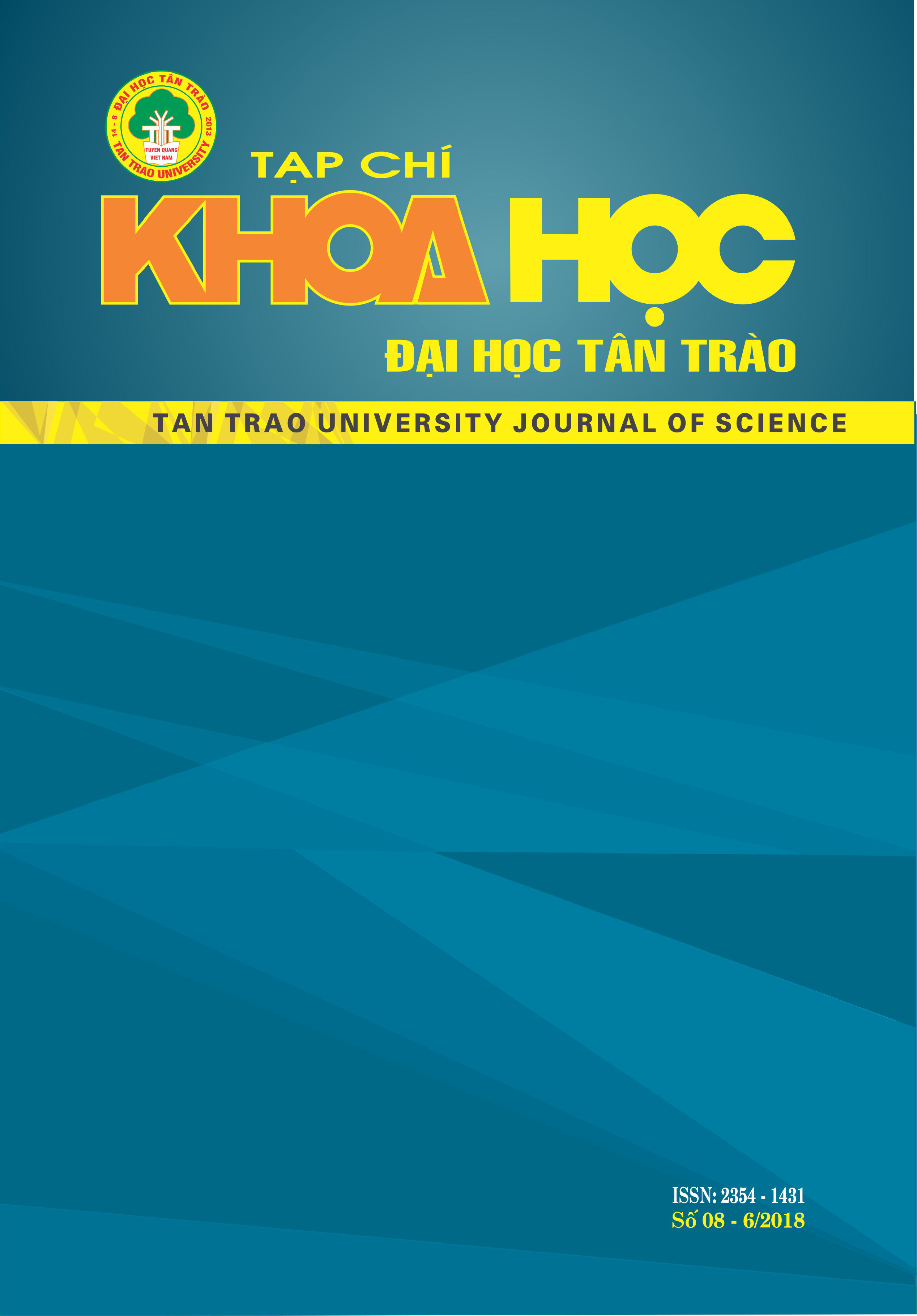So sánh thể thơ trong dân ca trữ tình sinh hoạt của người Tày và người Thái
DOI:
https://doi.org/10.51453/2354-1431/2018/209Từ khóa:
Thể thÆ¡, dân ca trữ tình sinh hoạt, ngÆ°á»i Tà y, ngÆ°á»i Thái, so sánh.Tóm tắt
Người Tày và người Thái sử dụng các thể thơ chủ đạo khác nhau khi sáng tác dân ca trữ tình sinh hoạt. Trong dân ca trữ tình sinh hoạt Tày, thể thơ thất ngôn chiếm ưu thế. Lượn cọi, lượn then, phong slư được sáng tác theo thể thất ngôn kéo dài. Lượn slương dùng thất ngôn tứ tuyệt nên nổi bật ở tính ngắn gọn. Việc sử dụng thể thất ngôn liên quan tới những ảnh hưởng của văn hóa Kinh, Hán tới văn hóa Tày thông qua con đường sách vở, học hành. Bên cạnh đó, người Thái sử dụng thể thơ tự do cho toàn bộ sáng tác dân ca trữ tình sinh hoạt của mình. Hai kiểu khống khái và xư bắc được sử dụng xen kẽ trong bài hát nhằm tạo sự chuyển ý, chuyển đoạn uyển chuyển. Việc sử dụng phổ biến thể thơ này có.
Tải xuống
Tài liệu tham khảo
1. Hoàng Triều Ân (chủ biên) (2014), Thành ngữ - Tục ngữ - Ca dao dân tộc Tày, Nxb Văn hóa dân tộc, Hà Nội;
2. Phương Bằng (sưu tầm, phiên âm chữ Nôm và dịch) (2012), Phong slư, Nxb Văn hóa dân tộc, Hà Nội;
3. Hoàng Thị Cấp (sưu tầm và dịch) (1994), Chồm bjoóc mạ, Nxb Văn hóa dân tộc, Hà Nội;
4. Tòng Văn Hân (2012), Khắp sứ lam của người Thái đen xã Nông Luống, huyện Điện Biên, tỉnh Điện Biên, Nxb Thời đại, Hà Nội;
5. Nguyễn Văn Hòa (sưu tầm, biên dịch) (2001), Truyện cổ và dân ca Thái vùng Tây Bắc Việt Nam, Nxb Văn hóa dân tộc, Hà Nội;
6. Kiểu Thu Hoạch (2014), Văn hóa dân gian người Việt – Góc nhìn so sánh, Nxb Khoa học Xã hội, Hà Nội;
7. Hoàng Văn Páo (chủ biên) (2012), Lượn Tày: Lượn Tày Lạng Sơn, lượn slương, Nxb Văn hóa dân tộc, Hà Nội;
8. Lục Văn Pảo (sưu tầm, phiên âm và dịch) (1991), Lượn cọi, Nxb Văn hóa dân tộc, Hà Nội;
9. Hà Mạnh Phong, Đỗ Thị Tấc (sưu tầm và dịch) (2012), Dân ca Thái Lai Châu, Quyển 2 – Thơ và dân ca tình yêu của người Thái Mường So, Nxb Văn hóa dân tộc, Hà Nội;
10. Đỗ Thị Tấc (sưu tầm và dịch) (2012), Dân ca Thái Lai Châu, Quyển 1 – Chiêng xoong mố bók (mùa xuân mùa hoa), Nxb Văn hóa dân tộc, Hà Nội;
11. Trung tâm Khoa học Xã hội và Nhân văn quốc gia (2002), Tổng tập Văn học dân gian người Việt, tập 15 – Ca dao, Nxb Khoa học Xã hội, Hà Nội;
12. Viện Nghiên cứu văn hóa (2007), Tổng tập văn học dân gian các dân tộc thiểu số Việt Nam, tập 18 – Dân ca, Nxb Khoa học Xã hội, Hà Nội;
13. Viện Nghiên cứu văn hóa (2007), Tổng tập văn học dân gian các dân tộc, Tập 19 – Dân ca, Nxb Khoa học Xã hội, Hà Nội.
Tải xuống
Đã Xuất bản
Cách trích dẫn
Số
Chuyên mục
Giấy phép

Tác phẩm này được cấp phép theo Giấy phép Quốc tế Creative Commons Attribution-ShareAlike 4.0 .
Bài báo được xuất bản ở Tạp chí Khoa học Đại học Tân Trào được cấp phép theo giấy phép Ghi công - Chia sẻ tương tự 4.0 Quốc tế (CC BY-SA). Theo đó, các tác giả khác có thể sao chép, chuyển đổi hay phân phối lại các bài báo này với mục đích hợp pháp trên mọi phương tiện, với điều kiện họ trích dẫn tác giả, Tạp chí Khoa học Đại học Tân Trào và đường link đến bản quyền; nêu rõ các thay đổi đã thực hiện và các nghiên cứu đăng lại được tiến hành theo cùng một bản quyền.
Bản quyền bài báo thuộc về các tác giả, không hạn chế số lượng. Tạp chí Khoa học Tân Trào được cấp giấy phép không độc quyền để xuất bản bài báo với tư cách nhà xuất bản nguồn, kèm theo quyền thương mại để in các bài báo cung cấp cho các thư viện và cá nhân.
Mặc dù các điều khoản của giấy phép CC BY-SA không dành cho các tác giả (với tư cách là người giữ bản quyền của bài báo, họ không bị hạn chế về quyền hạn), khi gửi bài tới Tạp chí Khoa học Đại học Tân Trào, tác giả cần đáp ứng quyền của độc giả, và cần cấp quyền cho bên thứ 3 sử dụng bài báo của họ trong phạm vi của giấy phép.






